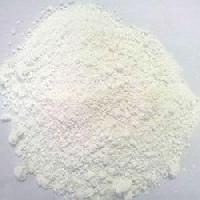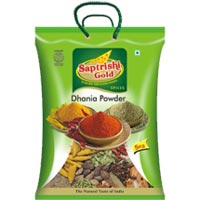
Get Price Quote
Soapstone Powder, udan powder, Talcum Powder, Marble Powder

Red Chilli Powder
Get Price Quote
1 Ton (MOQ)
Best Deals from Inorganic Compounds

red chilli powder
Get Price Quote
30-80 Marble Powder, China Clay Powder, Marble Dana, Marble Granules

red chilli powder
Get Price Quote
Limestone Powder, Soapstone Powder, China Clay Powder

red chilli powder
Get Price Quote
Super Fine Calcite Powder, Silica Lumps, Marble Chips, Coated Calcite Powder

red chilli powder
Get Price Quote
Chlorinated Paraffin Wax

red chilli powder
Get Price Quote
Barium Nitrate, Industrial Chemicals, Barium Sulphide

red chilli powder
Get Price Quote
Chlorinated Paraffin Wax, Web Traffic Management Services

Dolomite
Get Price Quote
Dolomite minerals occur wherever there is high content of organic matter. Dolomite occurs naturally as pink dolomite, white dolomite or gray dolomite. It is poorly soluble in dilute acid until and unless it is powdered. We are one of the most prominent dolomite manufacturers as well as the best among the dolomite suppliers in India. In nutrition, dolomite is also supplied as a dietary supplement on the assumption that it makes a good simultaneous source of two important elemental nutrients calcium and magnesium. Dolomite Dolomite (pronounced) is the name of a sedimentary carbonate rock and a mineral, both composed of calcium magnesium carbonate CaMg(CO3)2 found in crystals. Dolomite rock (also dolostone) is composed predominantly of the mineral dolomite. Limestone that is partially replaced by dolomite is referred to as dolomitic limestone, or in old U.S. geologic literature as magnesian limestone. Dolomite was first described in 1791 as the rock by the French naturalist and geologist, Déodat Gratet de Dolomieu (1750�1801) for exposures in the Dolomite Alps of northern Italy. Properties The mineral dolomite crystallizes in the trigonal-rhombohedral system. It forms white, gray to pink, commonly curved crystals, although it is usually massive. It has physical properties similar to those of the mineral calcite, but does not rapidly dissolve or effervesce (fizz) in dilute hydrochloric acid unless it is scratched or in powdered form. The Mohs hardness is 3.5 to 4 and the specific gravity is 2.85. Refractive index values are n� = 1.679 - 1.681 and nε = 1.500. Crystal twinning is common. A solid solution series exists between dolomite and iron rich ankerite. Small amounts of iron in the structure give the crystals a yellow to brown tint. Manganese substitutes in the structure also up to about three percent MnO. A high manganese content gives the crystals a rosy pink color noted in the image above. A series with the manganese rich kutnohorite may exist. Lead and zinc also substitute in the structure for magnesium. Formation Vast deposits are present in the geological record, but the mineral is relatively rare in modern environments. However, laboratory synthesis of stoichiometric dolomite has been carried out only at temperatures of greater than 100 degrees Celsius, conditions typical of burial in sedimentary basins�even though much dolomite in the rock record appears to have formed in low-temperature conditions. The high temperature is likely to speed up the movement of calcium and magnesium ions so that they can find their places in the ordered structure within a reasonable amount of time. This suggests that the lack of dolomite that is being formed today is likely due to kinematic factors. Modern dolomite does occur as a precipitating mineral in specialized environments on the surface of the earth today. In the 1950s and 60s, dolomite was found to be forming in highly saline lakes in the Coorong region of South Australia. Dolomite crystals also occur in deep-sea sediments, where organic matter content is high. This dolomite is termed "organogenic" dolomite. The actual role of bacteria in the low-temperature formation of dolomite remains to be demonstrated. The specific mechanism of dolomitization, involving sulfate-reducing bacteria, has not yet been demonstrated. Dolomite appears to form in many different types of environment and can have varying structural, textural and chemical characteristics. Some researchers have stated "there are dolomites and dolomites", meaning that there may not be one single mechanism by which dolomite can form. Much modern dolomite differs significantly from the bulk of the dolomite found in the rock record, leading researchers to speculate that environments where dolomite formed in the geologic past differ significantly from those where it forms today. Reproducible laboratory syntheses of dolomite (and magnesite) leads first to the initial precipitation of a metastable "precursor" (such as magnesium calcite), to be changed gradually into more and more of the stable phase (such as dolomite or magnesite) during periodical intervals of dissolution and reprecipitation. The general principle governing the course of this irreversible geochemical reaction has been coined Ostwald's step rule. For a very long time scientists had difficulties synthesizing dolomite. However, in a 1999 study, through a processes of dissolution alternating with the intervals of precipitation measurable levels of dolomite were synthesized at low temperatures and pressures. Uses Dolomite is used as an ornamental stone, a concrete aggregate and as a source of magnesium oxide. It is an important petroleum reservoir rock, and serves as the host rock for large strata-bound Mississippi Valley-Type (MVT) ore deposits of base metals (that is, readily oxidized metals) such as lead, zinc, and copper. Where calcite limestone is uncommon or too costly, dolomite is sometime used in its place as a flux (impurity remover) for the smelting of iron and steel. Large quantities of processed dolomite are used in the production of float glass (flat glass). In horticulture, dolomite and dolomitic limestone are added to soils and soilless potting mixes to lower their acidity ("sweeten" them). Home and container gardening are common examples of this use. As Nutritional Supplement In nutrition, dolomite is sold sometimes as a dietary supplement on the assumption that it should make a good simultaneous source of the two important elemental nutrients calcium and magnesium. However, since dolomites from Mississippi Valley-Type ore regions such as the Old Lead Belt and New Lead Belt in southeastern Missouri United States often include significant levels of lead and other toxic elements] users should always verify that such dolomite supplements are from non-ore regions before ingesting them. Further, laboratory experiments conducted at the University of Alberta demonstrate that dolomite is practically insoluble in stomach acid and is eliminated from the body before significant magnesium or calcium can be absorbed.] A far safer strategy is to avoid using dolomite as a supplement altogether, and instead taking equivalent amounts of milk of magnesia and calcium supplements. The chemical processes used to create such individual supplements effectively eliminate the risk of ingesting the toxic metals often associated with raw dolomite.

Dolomite
Get Price Quote
Dolomite, Grounded Calcium Carbonate, Ground Calcium Carbonate, Zinc Powder

Dolomite
Get Price Quote
Ground Calcium Carbonate Powder, Plaster Of Paris, Tile Adhesives

Dolomite
Get Price Quote
10 Micron Dolomite Powder, Exporter, 20 Micron Dolomite Powder

Dolomite
Get Price Quote
Calcium Chloride Powder, Dolomite Marble Powder, Magnesium Chloride

Dolomite
Get Price Quote
Coated Calcite Powder, Super fine Dolomite Powder, Super Fine Calcite Powder

Dolomite
Get Price Quote
Activated Calcium Carbonate, Ground Calcium Carbonate

natural calcite powder
Get Price Quote
Having a wide network, we work on all Payment Terms as per the suitability of our patrons. Our payment procedures are reliable and legal. We do not impose hidden charges. Our organization is one of the steadfast providers of the finest range of our product in Alwar(India).

Natural Calcite Powder
Get Price Quote
Calcite Lumps, China Clay Powder, Soapstone Powder, quartz granules

Natural Calcite Powder
Get Price Quote
10 Micron Dolomite Powder, 5 micron calcite powder, 500 mess powder

Coriander Powder
Get Price Quote
Fresh, rich taste and safe packaging are the attributes that make our Coriander Powder the first choice among customers. We are reliable Manufacturer, Supplier and Exporter of Coriander Powder from Rajasthan, India. Coriander Powder offered is processed under the firm direction of experienced quality controllers, these powders are safe to use and acclaimed for their long shelf life. Customers can avail the Coriander Powder in customized packaging options.

coriander powder
Get Price Quote
Limestone Powder, calcite mineral powder, minerals powdered

coriander powder
Get Price Quote
pure china clay, Soap Powder, white soapstone powder, Marble Powder

coriander powder
Get Price Quote
Stone Powder, Bentonite clay, Red Oxide, Barite Powder, Dolomite Lump

coriander powder
Get Price Quote
Calcium Chloride Granules, Coated Calcium Carbonate Powder

Lemon Peel Powder
195 Per Kilogram
500 Kilogram (MOQ)

Lemon Peel Powder
Get Price Quote
Bartyes Powder, silica granules, Pigment Paste, Soapstone Powder

Lemon Peel Powder
Get Price Quote
Pure Calcium Powder, Coated Calcium Powder, China Clay Powder

Lemon Peel Powder
Get Price Quote
White China Clay Powder, white limestone powder, Quartz Sand

Lemon Peel Powder
Get Price Quote

Turmeric Powder
Get Price Quote
100 Kilogram (MOQ)
Our organization hold expertise in manufacturing, distributing and supplying superior grade Ciba Taaza Turmeric Powder in India. Our offered Ciba Taaza Turmeric Powder is widely appreciated by our customers, which are situated all round the nation. Known for its best quality, clients can avail this Ciba Taaza Turmeric Powder at industry leading prices from us.

turmeric powder
Get Price Quote
Lightly Calcined Magnesium Oxide, Calcined Magnesite Powder